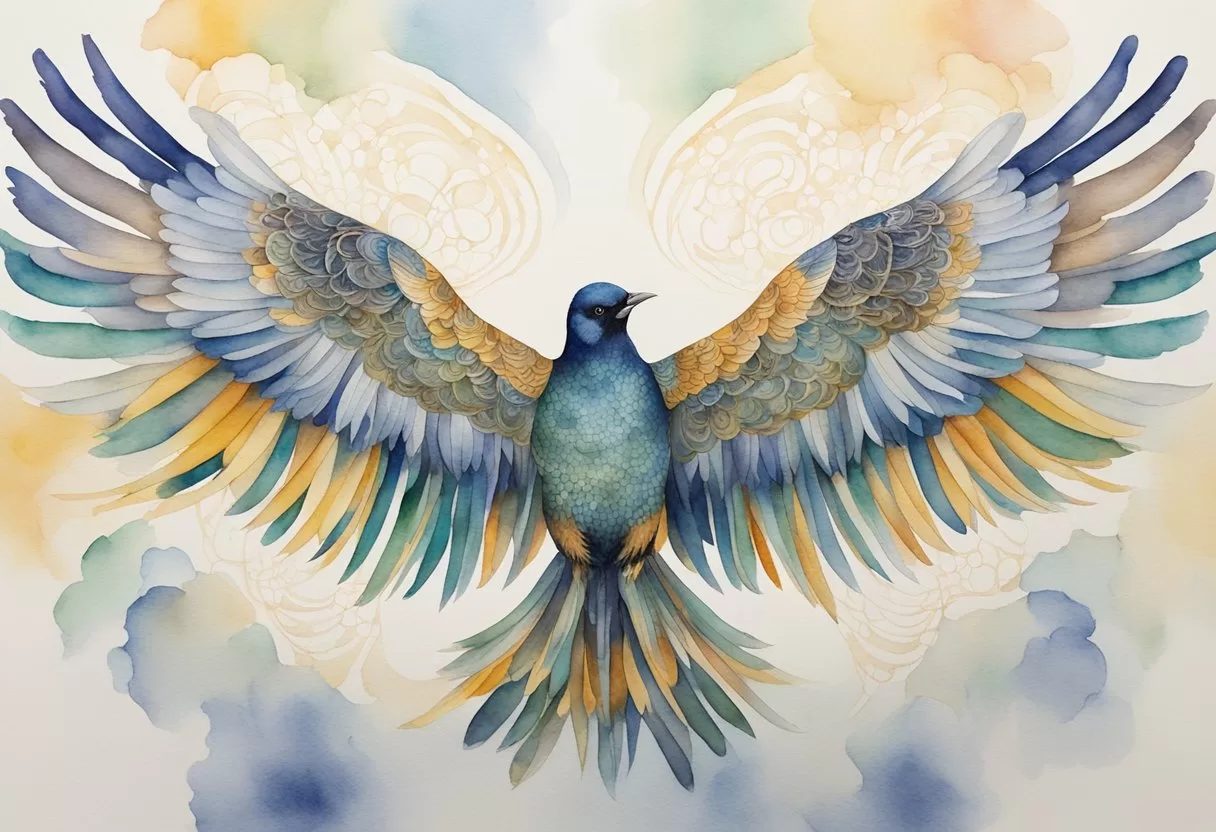Essentials of Feather Arrangement in Birds
Understanding feather arrangement is crucial for comprehending how birds regulate temperature, achieve flight, and attract mates. The organization of feathers affects their functionality and overall health, showcasing the intricate design of avian anatomy.
Pterylosis: The Study of Feather Tracts
Pterylosis pertains to the specific arrangement of feathers across the bird’s skin. Feathers grow from designated areas known as pterylae, while regions lacking feathers are termed apteria. This patterning allows for optimal coverage and function.
The distribution of feathers influences aerodynamics, insulation, and waterproofing. Each feather tract corresponds to a type, such as flight or contour feathers, playing distinct roles in the bird’s life. This systematic organization is vital for maintaining health and efficiency in various environments.
Feather Types and Their Functions
Birds possess various feather types, each serving specific functions. The primary categories include:
- Flight Feathers (Remiges): These are essential for flight, providing lift and maneuverability.
- Contour Feathers: They create the bird’s outer shape and offer protection against environmental factors.
- Down Feathers: Located beneath contour feathers, they trap air for insulation.
Additionally, specialized feathers like filoplumes and semiplumes have roles in sensory perception and additional insulation, respectively. The adaptation of these feathers is a significant aspect of feather evolution, showcasing how birds adapt to their environments.
Physical Structure of Feathers
Bird feathers are remarkable structures composed primarily of keratin, specifically beta-keratin. They exhibit a complex anatomy, featuring a central shaft (rachis) with barbs branching out. Each barb may further branch into smaller barbules, creating a compact and aerodynamic surface.
Feathers can be classified as either plumulaceous or pennaceous. Plumulaceous feathers, softer and fluffier, provide insulation, while pennaceous feathers are stiffer, allowing for flight efficiency. This physical structure enables birds to adapt their plumage to various functional demands, reinforcing their survival and success in diverse ecosystems.
Functional Dynamics of Feather Arrangement

Feather arrangement plays a crucial role in several functions essential for survival and adaptability in birds. The patterns in which feathers are organized contribute significantly to flight dynamics, thermal regulation, and communication. Each facet of feather arrangement influences various behaviors and evolutionary strategies.
Role in Flight and Aerodynamics
Feather arrangement directly affects a bird’s flight mechanics. The structured patterns, or pterylae, optimize aerodynamics by allowing for effective airflow during both upstroke and downstroke. When a bird flaps its wings, its plumage functions like an airfoil, generating lift while minimizing drag. The positioning of feathers helps in manipulating airflow, improving flight efficiency, and enhancing maneuverability.
Birds with specialized feather arrangements can control their flight more precisely, which aids in activities such as foraging and escaping predators. For example, some birds may adjust feather position to reduce air resistance, making them more agile in the air.
Insulation, Camouflage, and Display
Feathers are vital for insulation, helping birds maintain their body temperature despite varying environmental conditions. The density and arrangement create effective barriers against cold air and moisture. This insulation is crucial for species living in extreme climates.
Camouflage is another essential function linked to feather arrangement. Patterns and colors can blend in with natural surroundings, helping birds evade predators. Beyond camouflage, intricate feather patterns also serve as displays during mating rituals, signaling fitness and health to potential mates.
Feathers can additionally change color based on light angles, further enhancing their visual effect in specific contexts.
Feather Maintenance: Molting and Care
Maintaining feather functionality requires regular care, primarily through the process of molting. During molting, birds shed old feathers in a systematic pattern, allowing for the growth of new ones. This period is crucial, as it renews the bird’s plumage, ensuring optimal performance in flight and insulation.
Feather maintenance involves preening, where birds use their beaks to clean and align feathers. This activity keeps feathers in top condition to ensure proper insulation and flight dynamics. Effective maintenance increases longevity and overall adaptability in the environment, essential traits shaped by natural selection.
Evolutionary Perspectives and Adaptations
The evolution of feathers is a fascinating journey, reflecting adaptations that enhance survival and reproductive success. Through natural selection, birds have developed various feather types and arrangements that serve multiple functions in diverse environments.
From Scales to Feathers: Tracing Back the Evolution
Feathers are believed to have evolved from reptilian scales, providing insights into their origins. Fossil evidence, such as that from theropod dinosaurs, shows developmental similarities between feathers and scales. This transition highlights a significant evolutionary step.
As feathers began to emerge, they served primarily for insulation and display. Over time, their functions expanded to include flight. For instance, aerodynamic adaptations in soaring birds, like albatrosses, showcase the role of feather structure in efficient wing movement.
Variations in feather morphology also reflect evolutionary pressures. In passerines, the diversification of feathers supports diverse lifestyles and habitats. Colors and patterns evolved for camouflage, mating displays, and thermoregulation. Some species, like warblers, exhibit sexual dimorphism in plumage, which signals fitness to potential mates.
Adaptation to Environments: Variations Across Species
Adaptations in feather types are crucial for how birds survive and thrive in various environments. For example, diving birds like penguins have evolved dense, waterproof feathers that reduce buoyancy, making them efficient hunters underwater.
Conversely, birds such as hummingbirds possess lightweight feathers that facilitate rapid wing movement for hovering. In these species, feather structure supports high-energy flight, essential for accessing nectar.
Furthermore, feather arrangements can impact thermoregulation. Flapping birds may have different feather configurations compared to gliding birds, optimizing their specific flight modes. Variations also extend to habitat specific adaptations, as specific feather structures may enhance camouflage in particular settings.
Understanding these evolutionary adaptations offers valuable insight into the functional diversity seen in the avian world. These factors underline the complex interplay between evolution, environment, and the unique lifestyles of bird species.
Share this content:

Post Comment
You must be logged in to post a comment.